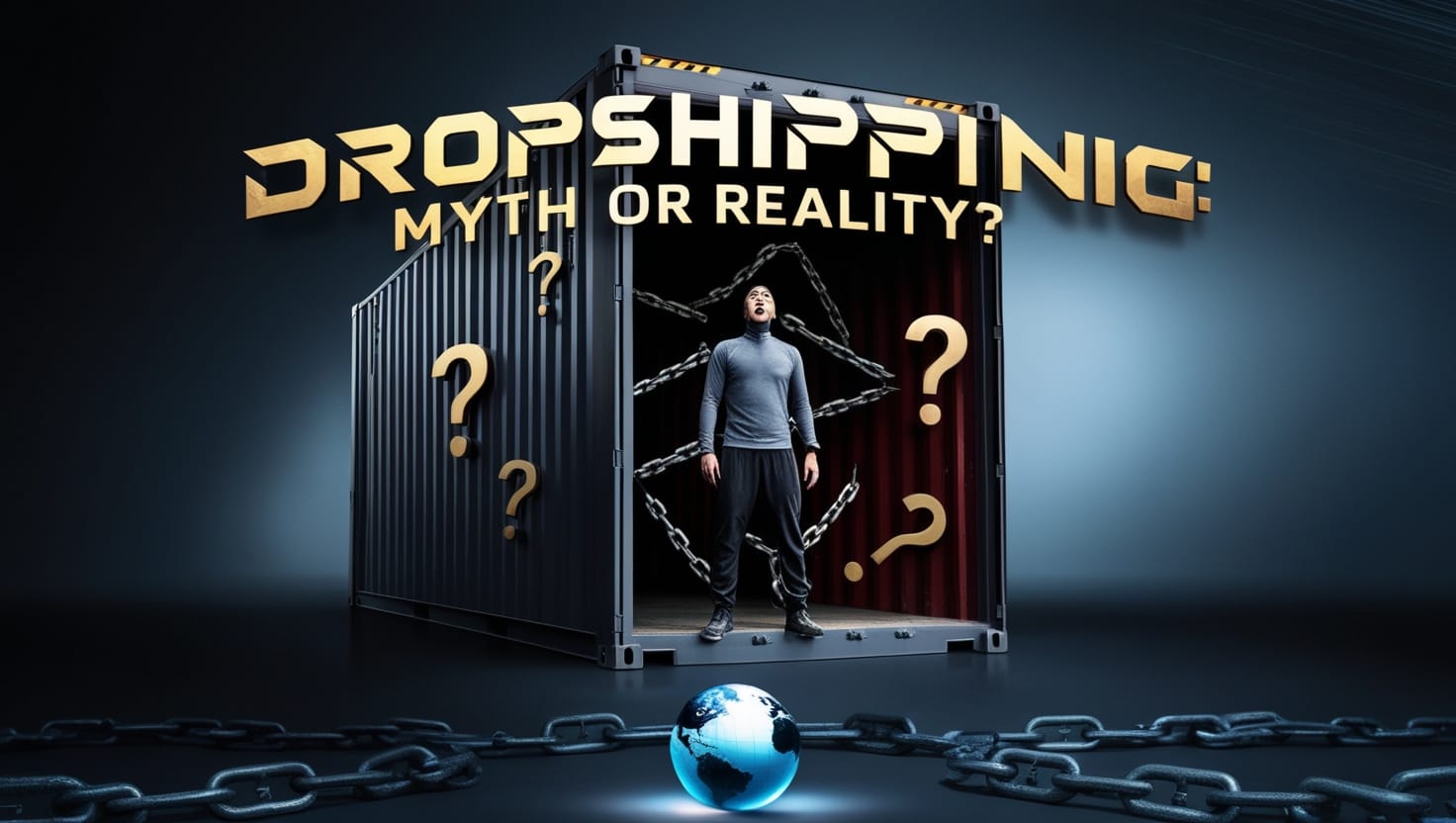Dropshipping has become one of the most popular methods for starting an online business with little capital. This model is particularly attractive to beginner entrepreneurs because of its promise of low risk and simplified management. But what about the idea of “free dropshipping”? Is it really possible to launch an online store without any initial investment, or is this a widely misunderstood myth? In this article, we explore the reality behind free dropshipping, its benefits, actual costs, and how to minimize expenses to succeed in this field.
What is dropshipping?
Dropshipping is an online business model where the store owner does not need to manage physical inventory. When a customer places an order on the online store, the owner purchases the product from a third-party supplier, who then ships the item directly to the customer. This structure eliminates the need to hold and manage stock, which helps reduce costs and financial risks compared to a traditional store.
Platforms like Shopify, Dropizi, and AliExpress have simplified the process of setting up online stores by offering tools to select and sell products through an automated system. In just a few clicks, entrepreneurs can import products to their stores, manage orders, and track shipments.
Is dropshipping really free?
The idea that dropshipping is completely free can be misleading because while some aspects of the model allow for reduced upfront costs, it is rare to start an online store without spending any money. Platforms like Shopify do offer free trial periods, but after that trial, you’ll need to pay monthly fees to continue using their services. Additionally, while tools and suppliers may offer low-cost services, there are always expenses associated with starting a business, even online.
1. E-commerce platforms
Services like Shopify and Dropizi allow entrepreneurs to create online stores with free trials. However, these trials only last 14 to 30 days, after which you must pay a subscription fee to keep your store online. For instance, Shopify’s basic plan starts at around $29 per month, a necessary cost to host the store and access sales management tools.
2. Supplier and product costs
Another often overlooked aspect of the free dropshipping myth is the cost of the products themselves. As a middleman, you’ll need to pay for the product from the supplier once your customer has placed an order. While you’re not paying upfront for inventory, each order requires an immediate payment to the supplier. Some dropshipping suppliers may also charge fees for accessing their product catalogs.
3. Marketing and advertising
To attract customers to a dropshipping store, investing in marketing is essential. Social media platforms, Google Ads, and Facebook ads are commonly used to drive traffic. While it’s possible to use organic methods like SEO or content marketing, these techniques take time to generate results and are not entirely free if you need to use optimization tools or hire specialists.
4. Transaction and additional tool fees
Payment platforms like PayPal and Stripe charge a commission on every sale. While these fees are relatively low (about 2-3%), they add up over time and should be factored into your cost calculations. Additionally, automation tools like Oberlo or DSers can help manage orders, but these services may require payment once you exceed a certain number of orders.
How to minimize costs in dropshipping?
While free dropshipping is a myth, it’s still possible to minimize costs to start an online store on a tight budget. Here are some strategies to achieve that:
1. Use platforms with free trials
You can maximize the free trial periods offered by online store creation platforms. Shopify offers 14 days for free, which gives you time to set up your store, test its functionality, and even make your first sales before incurring fees. During this period, you can also explore other options like WooCommerce, which is a free extension of WordPress, though you’ll need to pay for hosting.
2. Find suppliers without upfront fees
Some supplier platforms, like AliExpress, allow entrepreneurs to start without subscription fees. You only pay when you make a sale, significantly reducing the need for working capital. However, it’s important to carefully choose suppliers based on product quality and shipping times to avoid unpleasant surprises.
3. Use free or low-cost marketing
While paid advertising is often necessary to attract customers, there are free or low-cost alternatives. Using social media like Instagram or TikTok to build a community around your store can be highly effective. Additionally, tools like Google Trends can help you identify popular products and tailor your offerings accordingly.
4. Maximize SEO
Search engine optimization (SEO) is a long-term strategy that can attract customers without spending on advertising. By optimizing your store pages for search engines, you increase your chances of attracting organic traffic. This requires time and effort but can yield significant results if you invest in this approach from the beginning.
The benefits of dropshipping on a limited budget
The main advantage of dropshipping with little or no initial investment is the reduction of financial risks. Unlike traditional retail, you don’t have to pay upfront for inventory you might not sell. This allows you to test several products and marketing strategies without committing too much money.
Additionally, dropshipping offers great flexibility. If a product doesn’t sell well, you can quickly remove it from your catalog without suffering a significant financial loss.
Challenges and pitfalls to avoid
Even with a reduced budget, it’s essential to be mindful of common dropshipping pitfalls:
- Neglecting product quality: Testing product quality is essential to avoid customer returns and negative reviews. Poor quality can quickly damage your reputation.
- Poor management of delivery times: Most dropshipping products come from foreign suppliers, particularly in Asia, which can lengthen delivery times. It’s crucial to communicate these delays clearly to your customers to avoid disappointment.
- Legal and tax aspects: Even if dropshipping seems simple, there are rules to follow. You need to be aware of applicable taxes, such as VAT, and make sure you comply with commercial laws in the country where you sell.
Conclusion: Is free dropshipping possible?
Free dropshipping, as a concept, is largely a myth because there will always be costs associated with creating and managing an online store. However, compared to other business models, dropshipping remains one of the most affordable options for starting an online business. With a smart strategy and careful cost management, it’s possible to limit your initial investment while building a profitable business.
Ultimately, success in dropshipping depends on your ability to manage resources well, offer excellent customer service, and be strategic in product and marketing tool choices. With a bit of effort and a clear vision, it’s possible to thrive in dropshipping while keeping expenses to a minimum.

